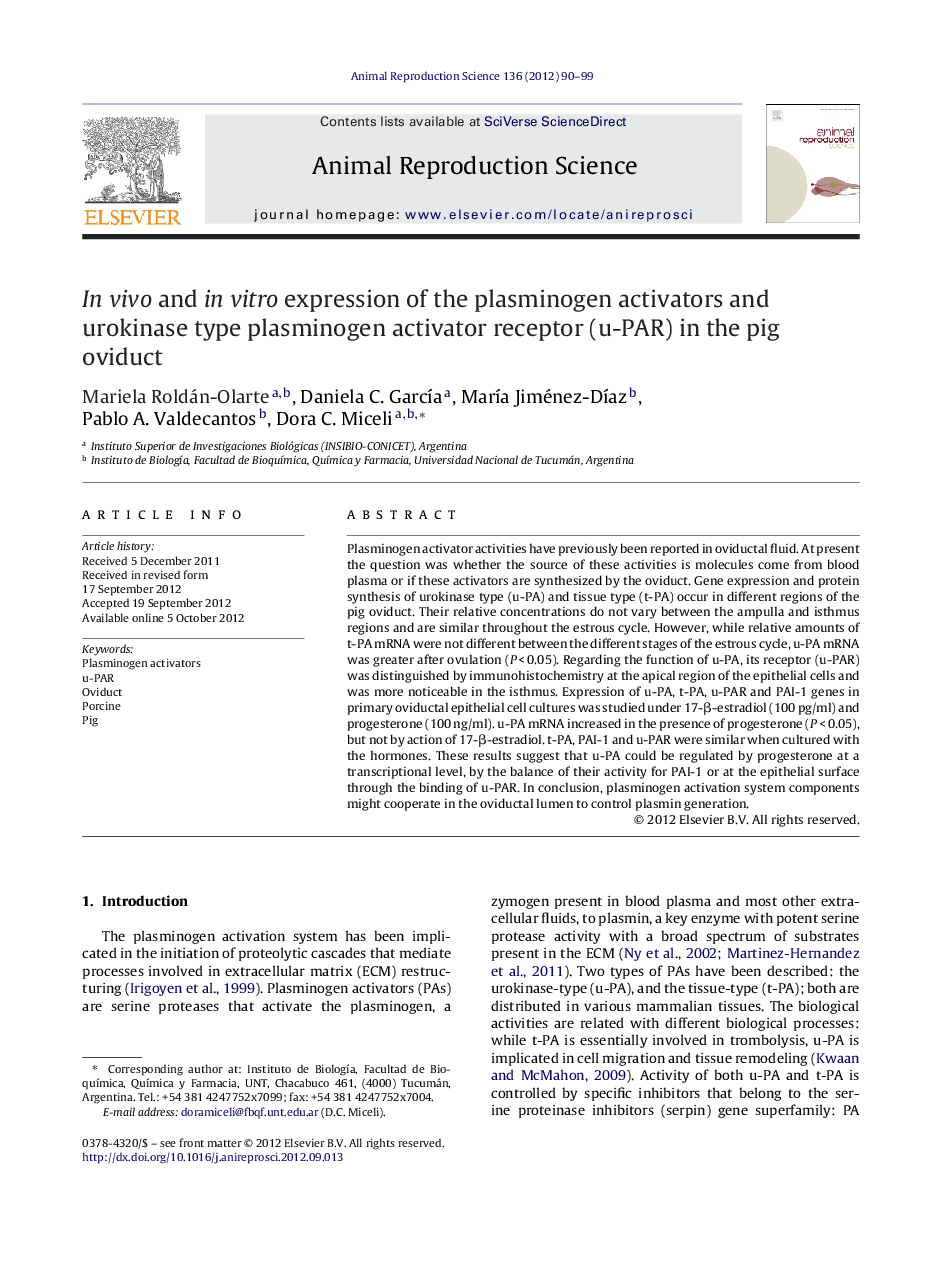| Article ID | Journal | Published Year | Pages | File Type |
|---|---|---|---|---|
| 8405299 | Animal Reproduction Science | 2012 | 10 Pages |
Abstract
Plasminogen activator activities have previously been reported in oviductal fluid. At present the question was whether the source of these activities is molecules come from blood plasma or if these activators are synthesized by the oviduct. Gene expression and protein synthesis of urokinase type (u-PA) and tissue type (t-PA) occur in different regions of the pig oviduct. Their relative concentrations do not vary between the ampulla and isthmus regions and are similar throughout the estrous cycle. However, while relative amounts of t-PA mRNA were not different between the different stages of the estrous cycle, u-PA mRNA was greater after ovulation (P < 0.05). Regarding the function of u-PA, its receptor (u-PAR) was distinguished by immunohistochemistry at the apical region of the epithelial cells and was more noticeable in the isthmus. Expression of u-PA, t-PA, u-PAR and PAI-1 genes in primary oviductal epithelial cell cultures was studied under 17-β-estradiol (100 pg/ml) and progesterone (100 ng/ml). u-PA mRNA increased in the presence of progesterone (P < 0.05), but not by action of 17-β-estradiol. t-PA, PAI-1 and u-PAR were similar when cultured with the hormones. These results suggest that u-PA could be regulated by progesterone at a transcriptional level, by the balance of their activity for PAI-1 or at the epithelial surface through the binding of u-PAR. In conclusion, plasminogen activation system components might cooperate in the oviductal lumen to control plasmin generation.
Related Topics
Life Sciences
Agricultural and Biological Sciences
Animal Science and Zoology
Authors
Mariela Roldán-Olarte, Daniela C. GarcÃa, MarÃa Jiménez-DÃaz, Pablo A. Valdecantos, Dora C. Miceli,
